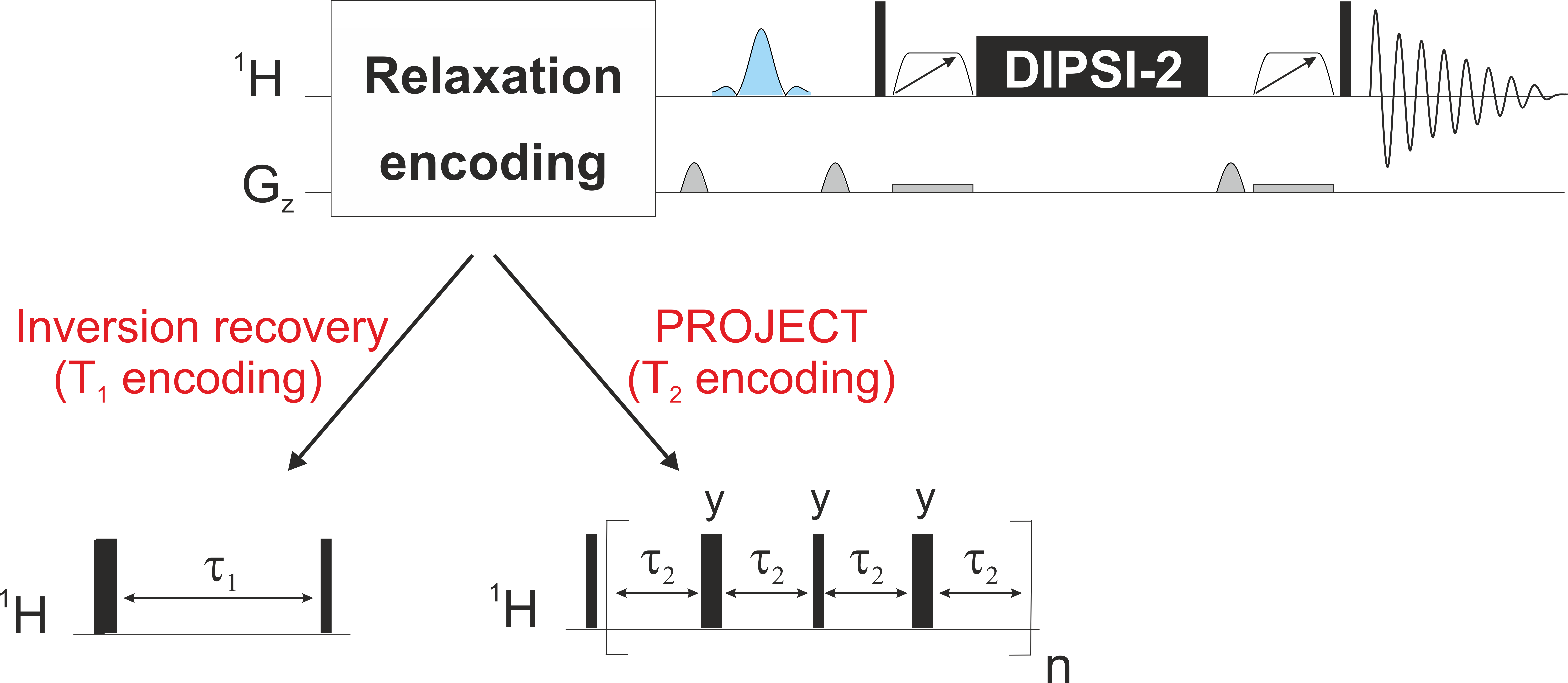- 1D PSYCHE
- 1D TSE-PSYCHE
- 1D Zangger-Sterk
- 1D Selective TOCSY-PSYCHE
- 1D SAPPHIRE
- 1D semi-real-time pure shift
- 2DJ-ZQS-PSYCHE
- 2D F1-PSYCHE-TOCSY
- 2D rtPS-gHSQC
- GEMSTONE
- GEMSTONE-CLIP-COSY
- GEMSTONE-NOESY
- GEMSTONE-ROESY
- GEMSTONE-TOCSY
- PSYCHE-iDOSY
- DOSY Oneshot
- Oneshot-iDISPEL
- 1D FESTA
- REST
- PUREST
- SCALPEL
- PROJECT
- DISPEL
- ODYSSEUS
- DOSY Oneshot (3ax)
- 3D Oneshot-HSQC
- 19F DOSY Oneshot45
- Pure Shift DOSY Oneshot
- 2D Constant-Time nQF-COSY
- PE WATERGATE (solvent suppression)
- 2D Zangger-Sterk NOESY
REST (Relaxation Encoded Selective TOCSY)
Summary:
A new family of NMR experiments for mixture analysis (Relaxation-Encoded Selective TOCSY, REST) allows the extraction of component subspectra from mixtures. It uses isotropic mixing to label whole spin systems with the relaxation times (e.g. T1, T2) of individual spins. With this methodology relaxation can be combined with multivariate methods (such as OUTSCORE) in the analysis of complex mixtures.

Pulse sequence:
The basic structure of the pulse sequence consists of an initial generation of T1 or T2 relaxation-weighted single quantum coherence (either using the inversion recovery or PROJECT sequence, respectively); a selective 180o pulse to select signals at a single chemical shift; and a final isotropic mixing sequence (here DIPSI-2 with zero-quantum coherence suppression) to transfer coherence throughout each spin system.

Downloads:
Bruker pulse sequence:
REST1 (right click and chose 'save ... as')
REST2 (right click and chose 'save ... as')
Experimental data:
Lager beer
Processing:
The processing of REST1 and REST2 experimental data is straightforward using the free and open source software package GNAT.
Reference:
Dal Poggetto, G.; Castañar, L.; Adams, R. W.; Morris, G. A.; Nilsson, M.; Chem. Commun. 53, 7461-7464, 2017.
DOI: 10.1039/C7CC03150E
Please note that copyright restrictions prevent us from placing the pdf files on our website, however, this article is open access and the pdf can be downloaded from RSC.
